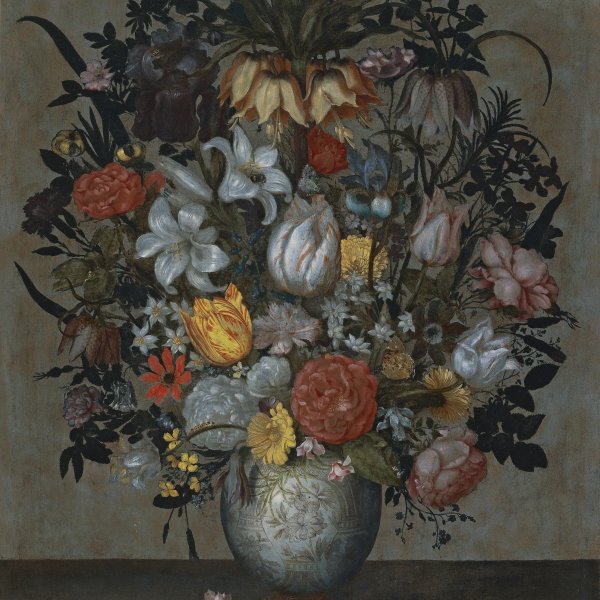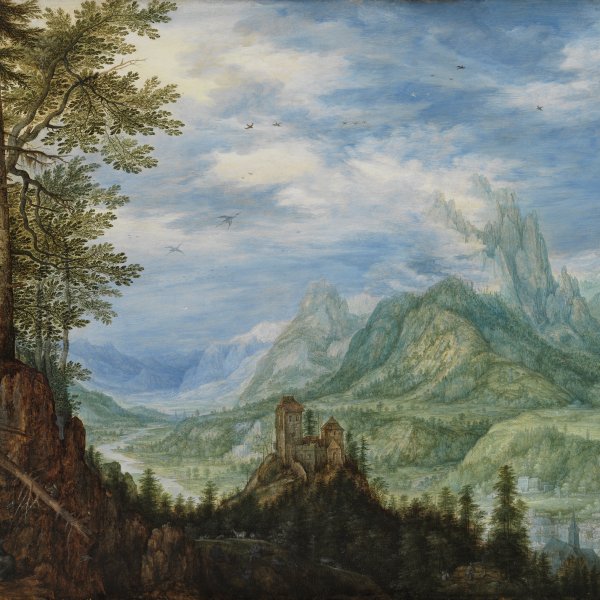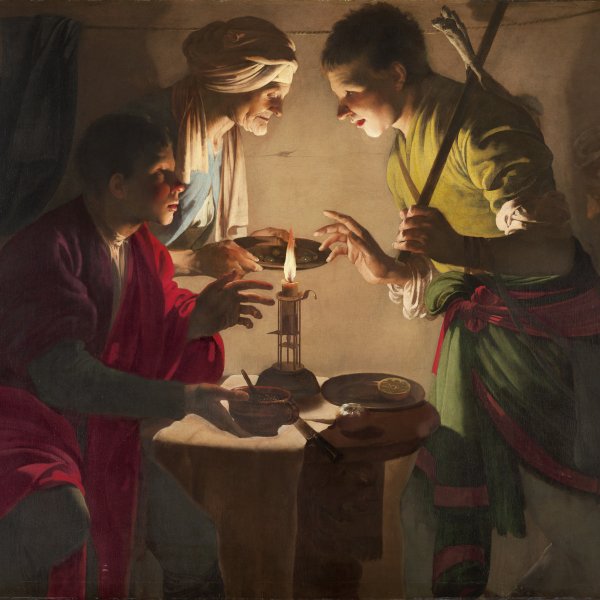Saint Sebastian attended by Saint Irene and her Maid
ca. 1615 - 1621
Oil on canvas.
169 x 128 cm
Museo Nacional Thyssen-Bornemisza, Madrid
Inv. no.
347
(1986.4
)
ROOM 12
Level 2
Permanent Collection
Saint Sebastian attended by Saint Irene and her Maid was acquired for the Collection in 1986 from a Sotheby’s auction in which it was catalogued as by Theodor Rombouts. This attribution was made by Leonard J. Slatkes, who dated the canvas to Rombouts’ period in Rome between 1616 and 1620 and mentioned the possibility that it was the first depiction of this subject by a northern follower of Caravaggio. Gaskell rejected Slatkes’ attribution on the basis of a comparison with other works by Rombouts. Following its restoration, Gaskell examined the canvas and suggested an attribution to Dirck van Baburen, dating the canvas to an early phase in the artist’s career during his time in Italy. Gaskell compared it to one of the artist’s earliest known works, The Burial of Christof 1617, painted for the chapel of the Pietà in the church of San Pietro in Montorio in Rome. He drew attention to the similarities between the arrangement of the figures in space, the manner of applying the pronounced shadows, the construction of the edges of the folds of the drapery, and the placement of the secondary objects.
The same subject is depicted in a painting by an unknown artist now in the Bob Jones University Collection of Sacred Art in Greenville, which has been considered a copy of a lost work by Van Baburen. Its composition has been related to one of the artist’s first documented works in Italy, a Martyrdom of Saint Sebastian painted for a church in Parma. Basing himself on these elements, Gaskell suggested that the present canvas could be associated with the lost Parma painting.
The painting depicts the moment when Saint Irene, a charitable widow, attended the Roman centurion after he had been shot at, extracting the arrow in his side. On the right and also emerging from the darkness is her elderly maid who firmly supports the saint. The lower right area of the canvas is occupied by a mound of Sebastian’s armour. Baburen depicted this popular episode from the saint’s life in a precise manner, sculpting and defining his composition. Various details such as the long brushstrokes used to depict the arms and legs of the saint, the way of highlighting the nose and the toes in reddish tones and the manner of painting the hair in large locks are strikingly typical of Van Baburen’s style, according to Gaskell.
In the 17th century the painting seems to have been in the Genoese collection of Giacomo Filippo Carrega, at which date it was described as a work by Caravaggio. It was passed down through the family by inheritance. The canvas remained unpublished until the Sotheby’s auction of 1986.
Mar Borobia
The same subject is depicted in a painting by an unknown artist now in the Bob Jones University Collection of Sacred Art in Greenville, which has been considered a copy of a lost work by Van Baburen. Its composition has been related to one of the artist’s first documented works in Italy, a Martyrdom of Saint Sebastian painted for a church in Parma. Basing himself on these elements, Gaskell suggested that the present canvas could be associated with the lost Parma painting.
The painting depicts the moment when Saint Irene, a charitable widow, attended the Roman centurion after he had been shot at, extracting the arrow in his side. On the right and also emerging from the darkness is her elderly maid who firmly supports the saint. The lower right area of the canvas is occupied by a mound of Sebastian’s armour. Baburen depicted this popular episode from the saint’s life in a precise manner, sculpting and defining his composition. Various details such as the long brushstrokes used to depict the arms and legs of the saint, the way of highlighting the nose and the toes in reddish tones and the manner of painting the hair in large locks are strikingly typical of Van Baburen’s style, according to Gaskell.
In the 17th century the painting seems to have been in the Genoese collection of Giacomo Filippo Carrega, at which date it was described as a work by Caravaggio. It was passed down through the family by inheritance. The canvas remained unpublished until the Sotheby’s auction of 1986.
Mar Borobia









